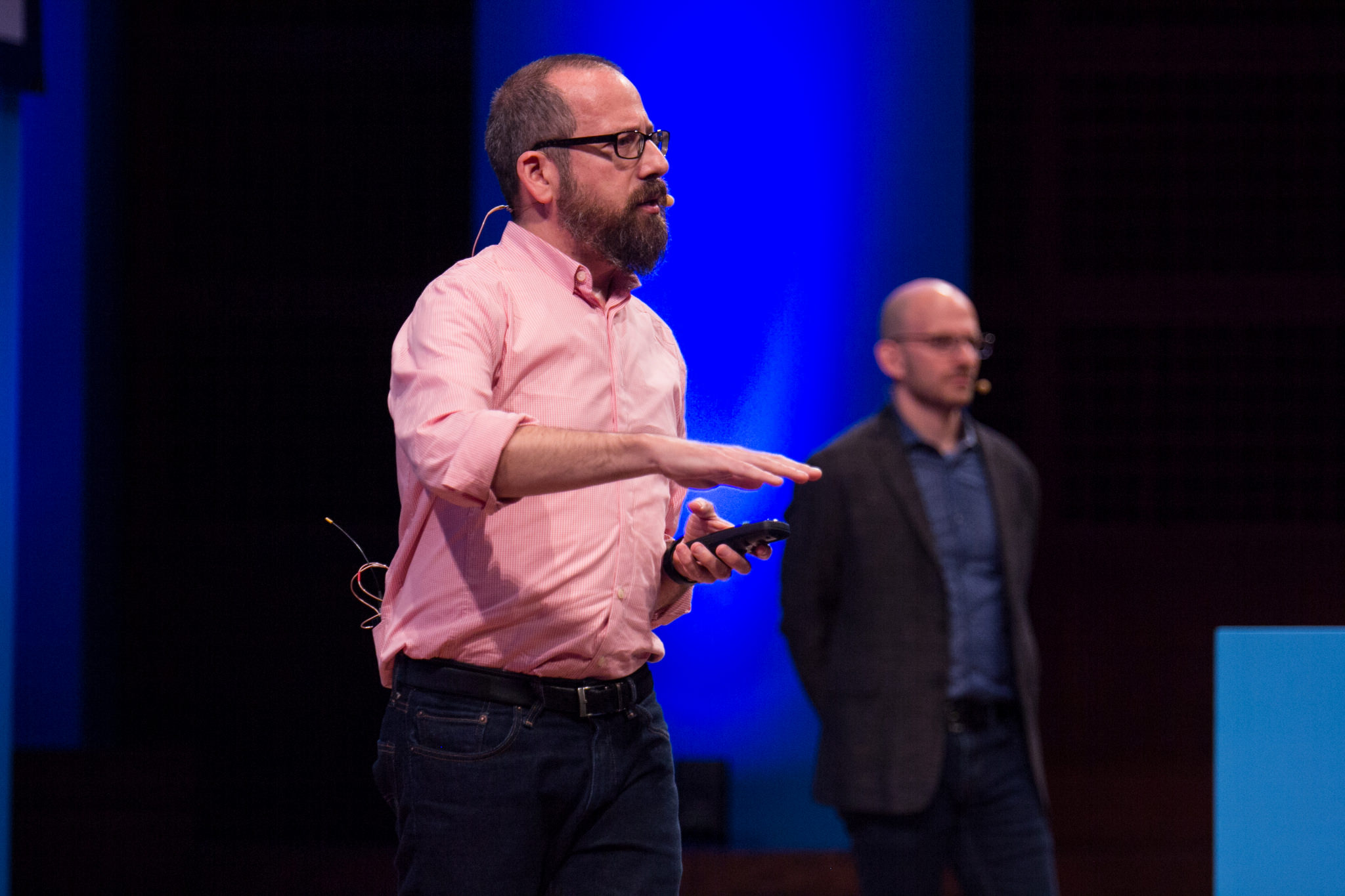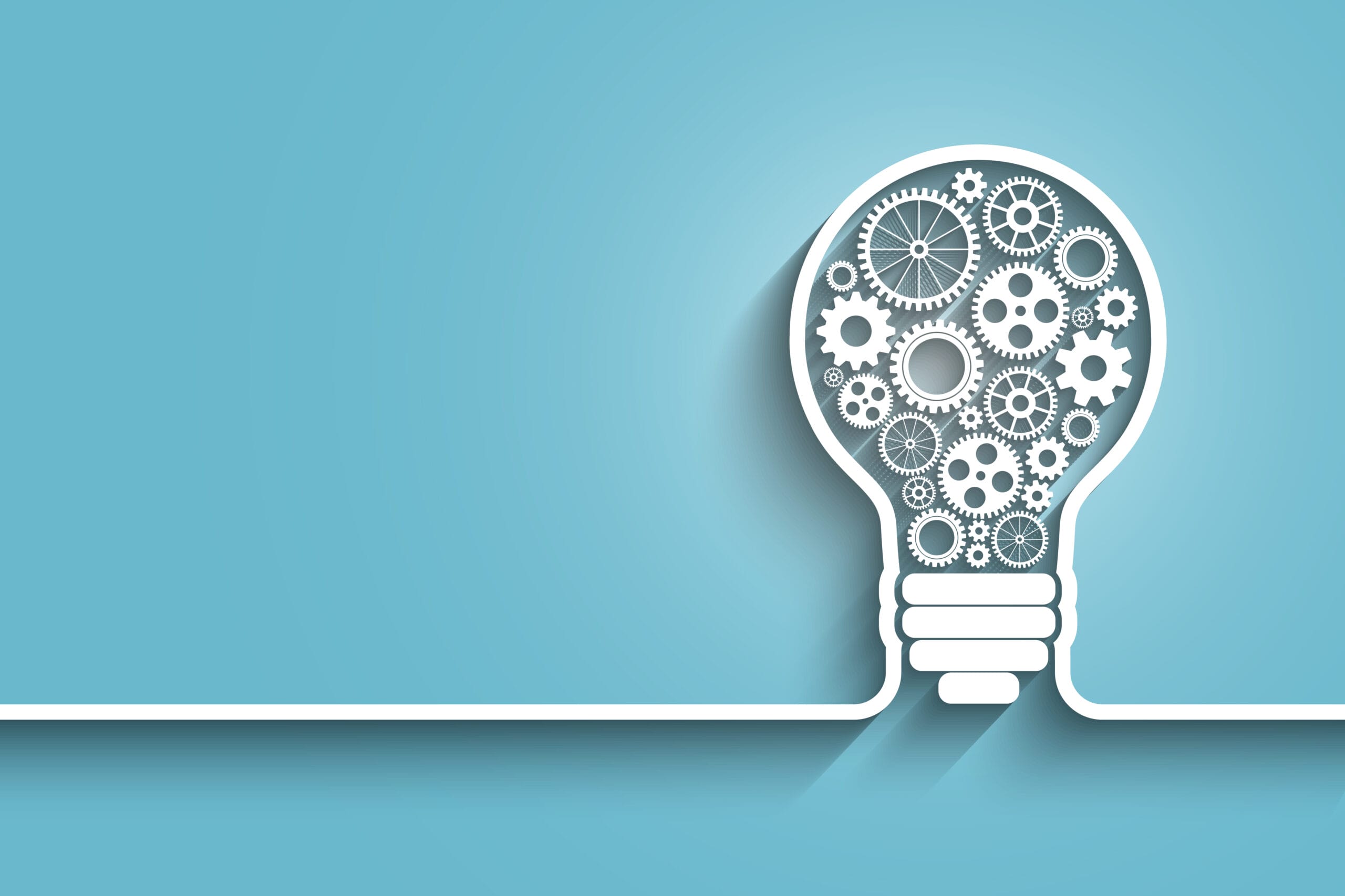In this closing keynote from Mind the Product San Francisco, Josh Seiden and Jeff Gothelf, the authors of Sense & Respond and Lean UX, shared a story about wheat farming as a parable for understanding our customers and how to respond to our their needs and technological change.
The story starts with a hypothesis statement. A simple way we can frame what we do to set our businesses up for success:
We believe that meeting this user need with these features will create this business outcome. We’ll know we’re right when we see this evidence.

The user need
Our user is the american farmer, growing wheat. And the economics of wheat farming are brutal. Wheat is a commodity and the market doesn’t consider how much it costs to make the wheat – just what a consumer is willing to pay for the end product. At the same time it’s really expensive to farm a big farm – at any given moment a farmer can have millions of dollars invested in a single harvest. To illustrate just how brutal the economics are – the average farmer make just $5.50 of profit per acre of wheat. And the risks are huge – one bad storm can ruin a whole crop, and that whole million dollar investment.
So the user needs lower costs, higher efficiency, and to stick to mother nature’s strict schedule.
The business outcome
The biggest and most exciting player in farm equipment is John Deere. Farmers lover their John Deere equipment, they’ve been using them for decades, and their brand loyalty is similar to Harley Davidson – to the point that some farmers get a tattoo of the John Deere logo…
And it’s not just tractors – there’s a whole other aspect to farming technology that is sophisticated and high tech, with everything from GPS enabled precision to self-driving tractors. So John Deere isn’t just a hardware company, they’re also a software company.
And to learn how to build the best product for their customers they do product discovery. They have a mock farm to test products on, they leverage that brand loyalty to get feedback from their customers, they run A/B tests on plots of land measured in square feet.
But despite being on top of their game, and having immense brand loyalty, John Deere are also the victims of the brutal economics of wheat. Because the only way to make a meaningful profit as a farmer is scale, it means there are fewer and fewer farmers farming larger and larger farms. And fewer farmers means fewer tractor sales. John Deere is down 8% year over year – that’s billions of dollars.
So John Deere has to rethink their business model and, to protect their margins, needs less reliance on equipment sales while maintaining that customer loyalty.

The promise
John Deere builds amazing equipment, and in response to customer needs their products have been getting more efficient (and more comfortable) – farmers can farm 2,500 acres today more easily than they could manage 500 acres 40 years ago. Recent innovations include self-driving tractors and precision equipment that can lay a different seed and fertiliser on a one foot by one foot matrix – letting farmers optimise their farm like never before.
But there’s a catch – the machines come with a licence agreement. And what this licence agreement states is that the farmer can’t service this equipment anymore – they need to use a John Deere service technician.
So John Deere has delivered more efficiency, more capability for their customers, and increased services revenue through the licence agreement.
The problem
But there’s a problem with that catch. Inevitably tractors and other farm equipment breaks down. Traditionally farmers could fix most things themselves, or call in a local repair guy, but today – because of the increased complexity of the product and the licence agreement governing it – you have to call in the John Deere certified mechanic. If your nearest dealer is hundreds of miles away though – you have to wait a long time for them to come to you and you risk losing that crop.
Farmers like to fix their own equipment but the licence agreement and the DMCA – which makes it illegal to circumvent copyrighted software – make it illegal for you to fix your own tractor. Your $500,000 tractor.
As a product manager you have to ask yourself here – are you solving user needs by building this complicated, integrated hardware and software systems – or are you exploiting user needs?
The evidence
As a result of this, a cottage industry of tractor hacking has sprung up – where farmers can buy devices and download software that lets them work around the licence agreement and fix their tractors themselves. When you enforce bad policy, people will work around that policy.
The point here is it’s not just about listening to your customer – but truly understanding your customer, their culture, and then making decisions based on that information.

The result
We don’t know how the story will end for John Deere. They’ve delivered incredible efficiency and high profitability for farmers across the country. But in certain situations they’re making bad policy decisions that put their customers in a quandary – they can choose between breaking the law or losing their crop.
Ultimately it’s down to us as product managers to find the right balance between business models, customer needs, customer experience, and the law. The legal structures will never keep pace with technology, which puts us makes in a challenging position – will we use those gaps to serve our customers? or exploit them?
Take aways
No matter what you make, you are in the software business first. The good news is that software lets you unlock new business models. The bad news is that software enforces policy, and your product codifies that policy. But culture trumps policy so the best way to reveal those cultural hurdles and serve your customer is to truly understand and implement the ship, sense, and respond loops that make us customer centric, and to frame success in customer centric terms.







Comments 0